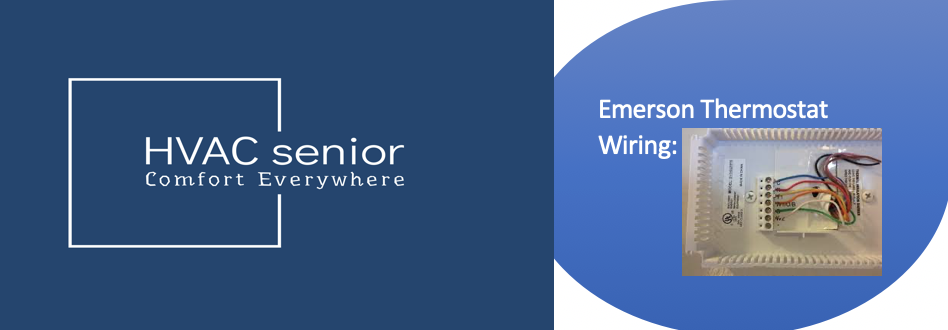Troubleshooting and Fixing a Heater Not Working.
When the chill of winter descends and the promise of warmth is met with disappointment, a malfunctioning heater can quickly turn a cozy home into an icy sanctuary. The issue of Heater Not Working can be a frustrating and inconvenient predicament.
Whether it’s a central heating system, a space heater, or an electric radiator, a malfunction can stem from various causes, such as faulty components, thermostat issues, or even a simple power outage.
At a glance:Heater Not Working due to Clogged or Dirty Air Filter,Lack of Maintenance,Thermostat Issues,A Malfunctioning Fuse Box,Lack of Gas,Blocked Ducts or The Blower Capacitor is Dead.
In this introduction, we’ll explore common reasons behind a heater not working, potential troubleshooting steps, and the importance of timely repairs to ensure a comfortable and habitable living environment during the coldest months.
Related post>>>>Heater Fan Not Working.
Reasons & Fixes for Your Heater Not Working
But what happens if your heater is not working? Before panicking, check the following. Sometimes, getting a heater to work again can be as simple as checking your thermostat. Read on to find out.
1.A Clogged or Dirty Air Filter.
A frequently encountered culprit when your heater is not working is a clogged air filter. Over time, air filters become laden with dirt, dust, and pet dander, severely obstructing airflow.
Why It Matters
- Inhibited Airflow: A dirty air filter inhibits the flow of warm air, rendering your heater inefficient and struggling to maintain a comfortable temperature in your space.
- Safety Concerns: Some heaters are equipped with safety mechanisms that trigger an automatic shut-off when they detect a clogged air filter. This is done to prevent potential hazards, making it crucial to address the issue promptly.
The Fix: Get Your Heater Working Again
- Replace the Air Filter: Head to your local home improvement store and procure a new air filter that matches your heater’s specifications. If your filter is reusable, thoroughly clean it before reinstalling.
- Regular Maintenance: Don’t overlook the importance of periodic filter replacement or cleaning. This simple task can prevent the recurrence of “heater not working” issues and ensure your system runs efficiently.
Also read>>>>Heater Smells Like Burning.
2.Lack of Maintenance.
Life’s demands can lead to neglecting our HVAC systems, making a non-working heater a common problem. The lack of regular maintenance is often the primary cause of heating malfunctions, leaving you in the cold.
The Significance of Regular Maintenance
- Dirty Furnace: Most of the time, the issue with a non-working heater is simply a dirty furnace. Dust and debris accumulate over time, affecting its efficiency and functionality. Neglected maintenance exacerbates this problem.
- Preventative Measure: Scheduling routine maintenance for your furnace and other appliances is crucial. It not only keeps your heater in peak condition but also helps avoid unexpected breakdowns during the chilly months.
The Fix: Bringing Warmth Back
- Professional Help: When faced with a heater not working due to a dirty or malfunctioning furnace, don’t hesitate. Contact your local heating technicians who specialize in HVAC maintenance and repairs.
- Regular Service: Ensure that your heating system undergoes routine check-ups and cleaning to prevent the recurrence of “heater not working” scenarios. It’s an investment in your comfort and peace of mind.
3.Thermostat Issues.
When dealing with a heater not working, the solution can sometimes be deceptively simple. Your thermostat plays a crucial role in maintaining home comfort, but it’s often overlooked.
Thermostat’s Vital Role
- Temperature Control: The thermostat is the conductor of your HVAC system, sending signals for it to turn on or off based on your desired temperature. If it’s not functioning correctly, it can lead to a heater not working.
- User Error: Occasionally, the issue may be as basic as a thermostat not being set to the correct temperature or turned off entirely. Overlooking this can lead to unnecessary concern.
The Fix: Reviving Your Heating System
- Check the Thermostat: Before delving into complex troubleshooting, take a moment to ensure your thermostat is set to the right temperature and is powered on. It’s a simple step but often the key to resolving a “heater not working” situation.
- Professional Assistance: If the thermostat appears to be in working order and your heater remains unresponsive, it’s time to call a local HVAC technician. They have the expertise to diagnose and rectify any thermostat issues, which may even involve replacing it.
Related post>>>Home heater not working.
4.A Malfunctioning Fuse Box.
When grappling with a heater not working, the culprit might not be within the heating system itself but in the source of its power. Your heating system is reliant on a fuse box, composed of critical electrical components like wires and breakers.
The Role of Breakers
- Tripped Breakers: Sometimes, a tripped breaker is the root cause of a heater not working. When a breaker is overloaded or experiences a surge in electrical current, it trips as a safety measure to prevent damage to the system.
- Simple Fix: The solution can be as straightforward as resetting the tripped breaker. This can be done by flipping it back to the “on” position, and your heater may spring back to life.
The Fix: Restoring Power to Your Heater
- Reset the Breaker: When you encounter a heater not working, don’t forget to check the breaker box. If you discover a tripped breaker, resetting it could be all that’s needed to get your heater back on track.
- Professional Intervention: However, if the breaker continues to trip off repeatedly, it may indicate a more serious problem. In this case, it’s advisable to call an HVAC technician to thoroughly inspect your system. They can identify and address any underlying issues to ensure your heater operates safely and efficiently.
Also read: Gas Water Heater not Working
5.A Lack of Gas.
For a heater to function, it relies on a steady supply of gas. When faced with a heater not working, one often overlooked possibility is that the furnace isn’t receiving the necessary gas.
Locating and Dealing with the Gas Valve
- Gas Valve Location: Troubleshooting a heater not working due to a lack of gas involves locating the gas valve, typically positioned somewhere between the furnace and the gas meter. This valve regulates the flow of gas to your heating system.
- Turning It Back On: To fix this issue, follow the gas line from your furnace back to your gas meter. There, you’ll find a valve handle. Ensure that the handle is turned to be parallel with the gas pipe, which will restore the flow of gas to your furnace.
The Fix: A Simple Gas Valve Adjustment
- Check the Gas Valve: Whenever you encounter a heater not working, it’s prudent to inspect the gas valve. Make sure it’s in the open position, allowing the gas to reach your furnace. This quick check might be all you need to bring warmth back to your home.
- Professional Help: If your efforts to adjust the gas valve do not yield results and your heater remains inactive, it’s time to contact an HVAC technician. They can investigate more complex issues with the gas supply to ensure your heating system is safe and functional.
6.Blocked Ducts
Just like clogged air filters, obstructed air ducts can be a silent yet significant culprit when dealing with a heater not working. Blocked ducts hinder the airflow, creating temperature disparities in different areas of your home.
The Role of Clean Ducts
- Airflow Restriction: When air ducts are laden with dust and debris, they inhibit the free circulation of warm air from your heating system. Some rooms may become uncomfortably warm, while others remain chilly.
- Temperature Disparities: These temperature disparities can not only lead to discomfort but also increased energy consumption as your heater struggles to achieve uniform warmth.
The Fix: Restoring Balanced Heat
- DIY Cleaning: To address this issue, you can clean your air ducts by removing dust and replacing vent covers. Regular cleaning is an essential part of duct maintenance to prevent “heater not working” scenarios.
- Professional Service: However, for a comprehensive and safe duct cleaning, it’s often best to call a professional HVAC technician. They have the expertise and equipment to thoroughly clean your ducts, ensuring optimal airflow and efficient heating. This is especially important if the issue persists, as it may be a sign of more severe blockages or duct damage.
7.The Blower Capacitor is Dead
When your heater is not working, you might not immediately consider the blower capacitor as a potential culprit. However, this small component plays a vital role in powering the fan’s motor, which is responsible for facilitating the flow of warm air throughout your HVAC system and into your home.
The Impact of a Dead Capacitor
- No Air Movement: If the blower capacitor is dead or malfunctioning, your furnace will refuse to turn on. This is because it’s unable to generate the necessary airflow, rendering your heater ineffective.
- Inadequate Heating: A non-functioning blower capacitor can lead to a range of issues, including insufficient heating, uneven temperature distribution, and discomfort in your living space.
The Fix: Replacing the Blower Capacitor
- Capacitor Replacement: To rectify this problem, you’ll need to replace the blower capacitor. This is a task best left to a qualified electrician or HVAC technician due to the electrical components involved.
- Professional Expertise: A professional electrician can assess the situation, determine the appropriate replacement, and install it safely. This ensures that your heater’s blower capacitor functions correctly, restoring the crucial air movement and heating capability to your HVAC system.
Also read>>>>Home Central Heater Not Working.
Frequently Asked Questions (FAQs).
Why is my heater not working?
There could be several reasons why your heater is not working. It might be due to a clogged air filter, neglected maintenance, a tripped breaker, a closed gas valve, or even a malfunctioning blower capacitor. Each of these issues can cause heating problems, so it’s essential to check and address each potential cause.
How can I fix my heater not working due to a clogged air filter?
To resolve a heater not working because of a clogged air filter, you should purchase a new filter that matches your system’s specifications. Alternatively, if the filter is reusable, clean it thoroughly before reinstalling. Regular maintenance, including filter replacement or cleaning, is essential to ensure your heater operates efficiently.
What should I do if my heater isn’t turning on because of a tripped breaker?
If your heater is not working due to a tripped breaker, follow the gas line from your furnace back to your gas meter.
Locate the valve handle and ensure it’s parallel to the gas pipe to turn it back on. This simple action should restore the gas supply to your heater and resolve the issue.
My furnace isn’t heating properly, and I suspect a dead blower capacitor. What’s the solution?
If your heater is not working because of a dead blower capacitor, it’s best to call an electrician or HVAC technician for assistance.
They will assess the situation, recommend the appropriate replacement, and install it safely. Replacing the blower capacitor ensures that your furnace can effectively move warm air through the system and into your home, restoring proper heating.
Conclusion.
A malfunctioning heater can lead to discomfort and inconvenience, especially during cold weather. This discussion has highlighted several common causes for a heater not working and their respective fixes.
From clogged air filters and neglected maintenance to tripped breakers and blower capacitor issues, each problem has a distinct solution.
Regular maintenance and simple checks, such as thermostat verification and gas valve examination, can often resolve these issues.
However, when in doubt, it’s advisable to seek professional assistance to ensure a safe and effective resolution. By addressing these potential culprits, you can restore warmth and comfort to your home, making the winter season more bearable.









